Audi 2014 Annual Report Download - page 19
Download and view the complete annual report
Please find page 19 of the 2014 Audi annual report below. You can navigate through the pages in the report by either clicking on the pages listed below, or by using the keyword search tool below to find specific information within the annual report.-
 1
1 -
 2
2 -
 3
3 -
 4
4 -
 5
5 -
 6
6 -
 7
7 -
 8
8 -
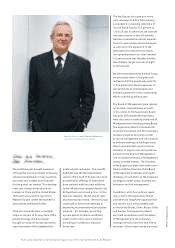 9
9 -
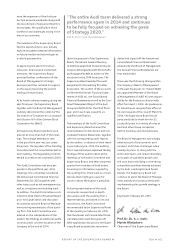 10
10 -
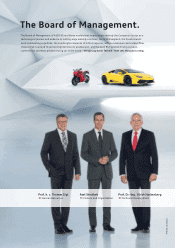 11
11 -
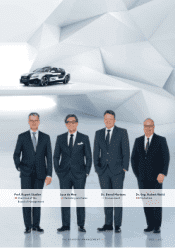 12
12 -
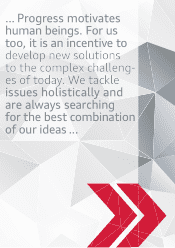 13
13 -
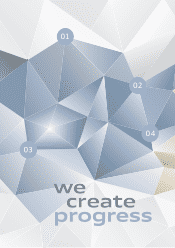 14
14 -
 15
15 -
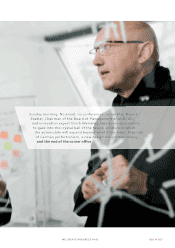 16
16 -
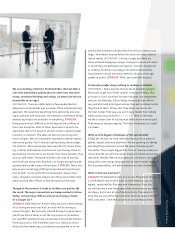 17
17 -
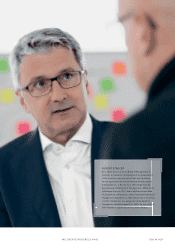 18
18 -
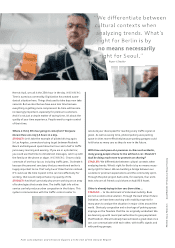 19
19 -
 20
20 -
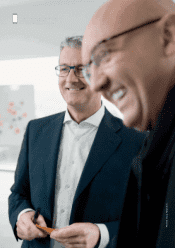 21
21 -
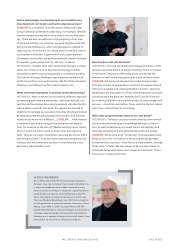 22
22 -
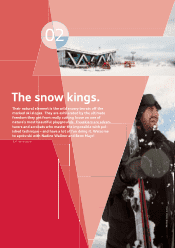 23
23 -
 24
24 -
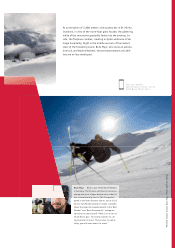 25
25 -
 26
26 -
 27
27 -
 28
28 -
 29
29 -
 30
30 -
 31
31 -
 32
32 -
 33
33 -
 34
34 -
 35
35 -
 36
36 -
 37
37 -
 38
38 -
 39
39 -
 40
40 -
 41
41 -
 42
42 -
 43
43 -
 44
44 -
 45
45 -
 46
46 -
 47
47 -
 48
48 -
 49
49 -
 50
50 -
 51
51 -
 52
52 -
 53
53 -
 54
54 -
 55
55 -
 56
56 -
 57
57 -
 58
58 -
 59
59 -
 60
60 -
 61
61 -
 62
62 -
 63
63 -
 64
64 -
 65
65 -
 66
66 -
 67
67 -
 68
68 -
 69
69 -
 70
70 -
 71
71 -
 72
72 -
 73
73 -
 74
74 -
 75
75 -
 76
76 -
 77
77 -
 78
78 -
 79
79 -
 80
80 -
 81
81 -
 82
82 -
 83
83 -
 84
84 -
 85
85 -
 86
86 -
 87
87 -
 88
88 -
 89
89 -
 90
90 -
 91
91 -
 92
92 -
 93
93 -
 94
94 -
 95
95 -
 96
96 -
 97
97 -
 98
98 -
 99
99 -
 100
100 -
 101
101 -
 102
102 -
 103
103 -
 104
104 -
 105
105 -
 106
106 -
 107
107 -
 108
108 -
 109
109 -
 110
110 -
 111
111 -
 112
112 -
 113
113 -
 114
114 -
 115
115 -
 116
116 -
 117
117 -
 118
118 -
 119
119 -
 120
120 -
 121
121 -
 122
122 -
 123
123 -
 124
124 -
 125
125 -
 126
126 -
 127
127 -
 128
128 -
 129
129 -
 130
130 -
 131
131 -
 132
132 -
 133
133 -
 134
134 -
 135
135 -
 136
136 -
 137
137 -
 138
138 -
 139
139 -
 140
140 -
 141
141 -
 142
142 -
 143
143 -
 144
144 -
 145
145 -
 146
146 -
 147
147 -
 148
148 -
 149
149 -
 150
150 -
 151
151 -
 152
152 -
 153
153 -
 154
154 -
 155
155 -
 156
156 -
 157
157 -
 158
158 -
 159
159 -
 160
160 -
 161
161 -
 162
162 -
 163
163 -
 164
164 -
 165
165 -
 166
166 -
 167
167 -
 168
168 -
 169
169 -
 170
170 -
 171
171 -
 172
172 -
 173
173 -
 174
174 -
 175
175 -
 176
176 -
 177
177 -
 178
178 -
 179
179 -
 180
180 -
 181
181 -
 182
182 -
 183
183 -
 184
184 -
 185
185 -
 186
186 -
 187
187 -
 188
188 -
 189
189 -
 190
190 -
 191
191 -
 192
192 -
 193
193 -
 194
194 -
 195
195 -
 196
196 -
 197
197 -
 198
198 -
 199
199 -
 200
200 -
 201
201 -
 202
202 -
 203
203 -
 204
204 -
 205
205 -
 206
206 -
 207
207 -
 208
208 -
 209
209 -
 210
210 -
 211
211 -
 212
212 -
 213
213 -
 214
214 -
 215
215 -
 216
216 -
 217
217 -
 218
218 -
 219
219 -
 220
220 -
 221
221 -
 222
222 -
 223
223 -
 224
224 -
 225
225 -
 226
226 -
 227
227 -
 228
228 -
 229
229 -
 230
230 -
 231
231 -
 232
232 -
 233
233 -
 234
234 -
 235
235 -
 236
236 -
 237
237 -
 238
238 -
 239
239 -
 240
240 -
 241
241 -
 242
242 -
 243
243 -
 244
244 -
 245
245 -
 246
246 -
 247
247 -
 248
248 -
 249
249 -
 250
250 -
 251
251 -
 252
252 -
 253
253 -
 254
254 -
 255
255 -
 256
256 -
 257
257 -
 258
258 -
 259
259 -
 260
260 -
 261
261 -
 262
262 -
 263
263 -
 264
264 -
 265
265 -
 266
266 -
 267
267 -
 268
268 -
 269
269 -
 270
270 -
 271
271 -
 272
272 -
 273
273 -
 274
274 -
 275
275 -
 276
276 -
 277
277 -
 278
278 -
 279
279 -
 280
280 -
 281
281 -
 282
282 -
 283
283 -
 284
284 -
 285
285 -
 286
286 -
 287
287 -
 288
288 -
 289
289 -
 290
290 -
 291
291 -
 292
292 -
 293
293 -
 294
294
 |
 |

Here at Audi, we call it the th hour in the day. WEINBERG :
Time is a precious commodity. Digitization has created a para-
doxical situation here. Things that used to take days now take
seconds. But we also feel we have even less time because
ev
erything is getting more compressed. So time will become
in
creasingly important, especially for premium customers.
And it’s not just a simple matter of saving time, it’s about the
quality of your time experience. People want to regain control
of their time.
Where is this th hour going to come from ? Everyone
knows there are only hours in a day.
STADLER : Let’s take the example of piloted driving again.
In Los Angeles, commuters trying to get between Redondo
Beach and Hollywood spend about an hour and a half in tra c
jams every morning and evening. If you are in a piloted car,
you could use that time to dictate text messages, catch up with
the family on the phone or skype. WEINBERG : I have a daily
commute of one hour by car, including tra c jams. I tolerate it
because the personal sanctuary that you mentioned earlier is
hugely important to me. That’s why I won’t take the train instead.
If I could use the time I spend in the car more e ectively for
working, that would really enhance my quality of life.
STADLER : And that’s precisely why we are working on an array
of technologies that create time. The tra c light info online
service can help reduce urban congestion in the future. This
system communicates with the tra c control center to
calculate your ideal speed for reaching every tra c signal on
green. As well as saving time, piloted parking uses parking
space in cities more e ectively because parking ga rages could
hold twice as many cars as they do now in the future.
With time and space at a premium in cities such as Berlin,
many young people choose to live without a car. Shouldn’t
Audi be doing much more to promote car sharing ?
STADLER : We di erentiate between cultural contexts when
analyzing trends. What’s right for Berlin is by no means neces-
sarily right for Seoul. We are building a bridge between our
customers’ premium expectations and the community spirit.
Through the pilot project Audi unite, for example, four archi-
tects who are all friends could share an Audi RS Avant.
China is already trying to ban cars from cities …
STADLER : … to the detriment of individual mobility. Bans
are not a constructive solution. Through the Audi Urban Future
Initiative, we have been working with mobility experts for
many years to analyze the situation in major cities around the
world. Obviously congestion and a shortage of parking spaces
impinge on the freedom that the car originally embodied. We
are teaming up with municipal authorities to give people back
that freedom. We will already have achieved a great deal once
cars can communicate with each other, with tra c signals and
with parking garages.
“We di erentiate between
“We di erentiate between
cultural contexts when
cultural contexts when
analyzing trends. What’s
analyzing trends. What’s
right for Berlin is by
right for Berlin is by
no means necessarily
right for Seoul.”
right for Seoul.”
PHOTOS : Klaus Mellenthin ILLUSTRATION : HPI School of Design Thinking
Rupert Stadler
Fuel consumption and emission figures at the end of the Annual Report
